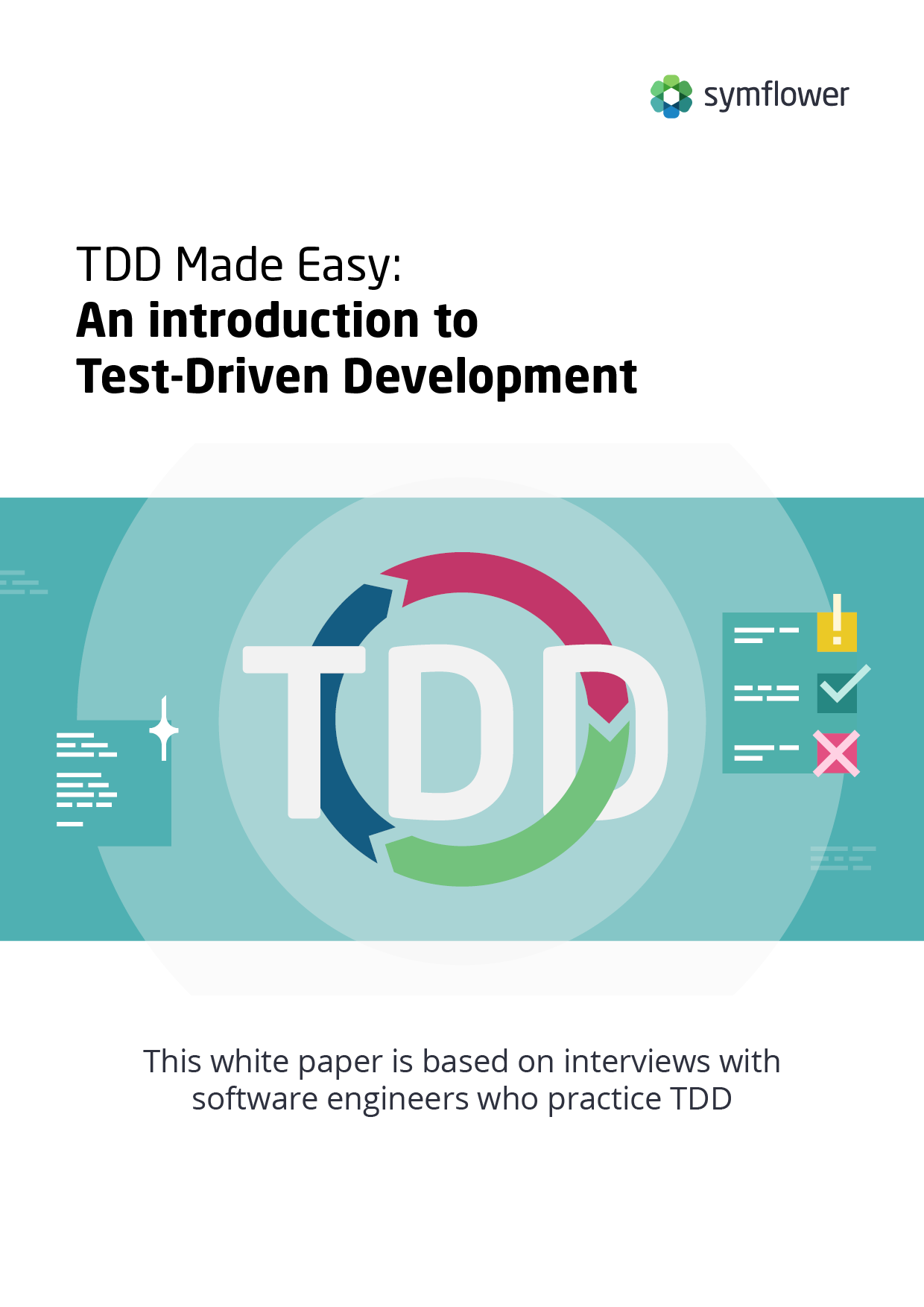Test-Driven Development promises significant benefits, but its adoption is far from straightforward. In this post, we’re sharing some best practices and strategies to ensure the success of your team’s TDD transition!
Test-Driven Development is gaining popularity due to a whole range of advantages it helps achieve like better code quality and solution design, easier code maintainability, faster feedback cycles, and simplified documentation. That said, TDD also has a steep learning curve, and adopting it requires developers to change some entrenched reflexes. That exercise in self-discipline is not easy for individual developers to do – and it’s even more challenging for development teams.
Rather than enforcing certain rules, the key to the successful adoption of TDD in an organization is getting each team member to embrace the TDD way of working. Some changes in the attitude of individual developers, as well as adjusting the organizational culture, are inevitable. Let’s see some key best practices for a successful TDD adoption journey.
How to introduce TDD in your organization - Success factors
Get a team on board
Before you consider switching to Test-Driven Development, it’s crucial to get a personal buy-in from each individual developer and to get the entire team on board. If one or a few members of the team stop writing tests first, the entire adoption initiative can crumble.
Since team commitment is so important, it’s smart to start with a “coalition of the willing”, e.g. a small team of developers interested in the methodology and motivated to stick to the core practices of TDD. If you work with several teams, getting one team to successfully transition to the TDD way of working can be key, as they can serve as role models for all the other teams. Not only that, but they can actually be a valuable resource by sharing their experiences about TDD adoption, and answering the questions of engineers that are doubtful about the methodology.
Educate the team & work with a TDD coach
Adopting Test-Driven Development is a constant learning process. It’s vital to facilitate that process by providing materials, guidance, and education for other team members. If you have someone on the team experienced with Test-Driven Development, they can take the lead on this – if not, it’s a good idea to get an external TDD expert to coach the team.
Dedicated workshops help developers get up to speed on the frameworks and practices of unit testing, and how to write good tests in a TDD environment. Pair programming can also be very helpful in getting used to the TDD way of coding. Some developers like to use katas to practice coding patterns. Encourage and facilitate whatever proves to be the most efficient way for your team to learn.
It’s a smart idea to make best practices available to all team members, enabling them to hit the ground running with TDD. Find some useful best practices and other key insights in our white paper:
TDD Made Easy: An introduction to Test-Driven Development

Simplify testing
Writing simple tests is a core practice of Test-Driven Development. Encourage your team to focus on simplicity: tests should be quick to write and fast to run. This enables the team to drive development forward with new tests, and to rerun tests whenever necessary without having to worry about it taking too long. You’ll also want to make sure that manual testing is reduced to a minimum in (or eliminated altogether from) your workflow. This way, each new release will benefit from the assurance that those tests provide.
That can be especially challenging when working on legacy code. Sure, sometimes, you’re lucky enough to work on greenfield projects. But if you’re like most developers, there’s a good chance that most of the time, you’ll be working with code that already exists and that may or may not be rightfully considered a mess. In such cases, using smart tooling to automate test creation can save you a ton of time and boring routine work while still giving you the assurance that adequate test coverage provides.
Provide a playground for practicing TDD
Since learning Test-Driven Development can be a bit of a challenge, it’s smart to provide a practice environment for your team. Start experimenting with production code, and chaos is likely to ensue. Instead, provide a “sandbox” environment where developers can safely practice and self-educate. Make it a gradual process by providing simple applications and code examples to work on, and let your teams work their way up in terms of complexity.
Pair programming
We’ve briefly touched on this before, but it makes sense to emphasize: pair programming with experienced TDD practitioners is one of the best ways to learn the ropes. Set up coding sessions to make it easier for developers to share TDD knowledge within the team. Process the learnings together, and incorporate your findings to enhance the way you facilitate TDD education for your team.
Allocate time to learn
This one can be a challenge in a fast-paced development environment, but it’s crucial: accept that TDD has a steep learning curve. You are likely to experience an initial drop in team velocity. Expect that it takes time, plan ahead, and give team members some slack to enable them to thoroughly learn and practice the methodology before they put it into practice on new projects and production code. To give a specific recommendation: we especially liked this book by Steve Freeman and Nat Pryce titled “Growing Object-Oriented Software, Guided by Tests”. It’s a great resource for any team looking to transition to the TDD way of working.